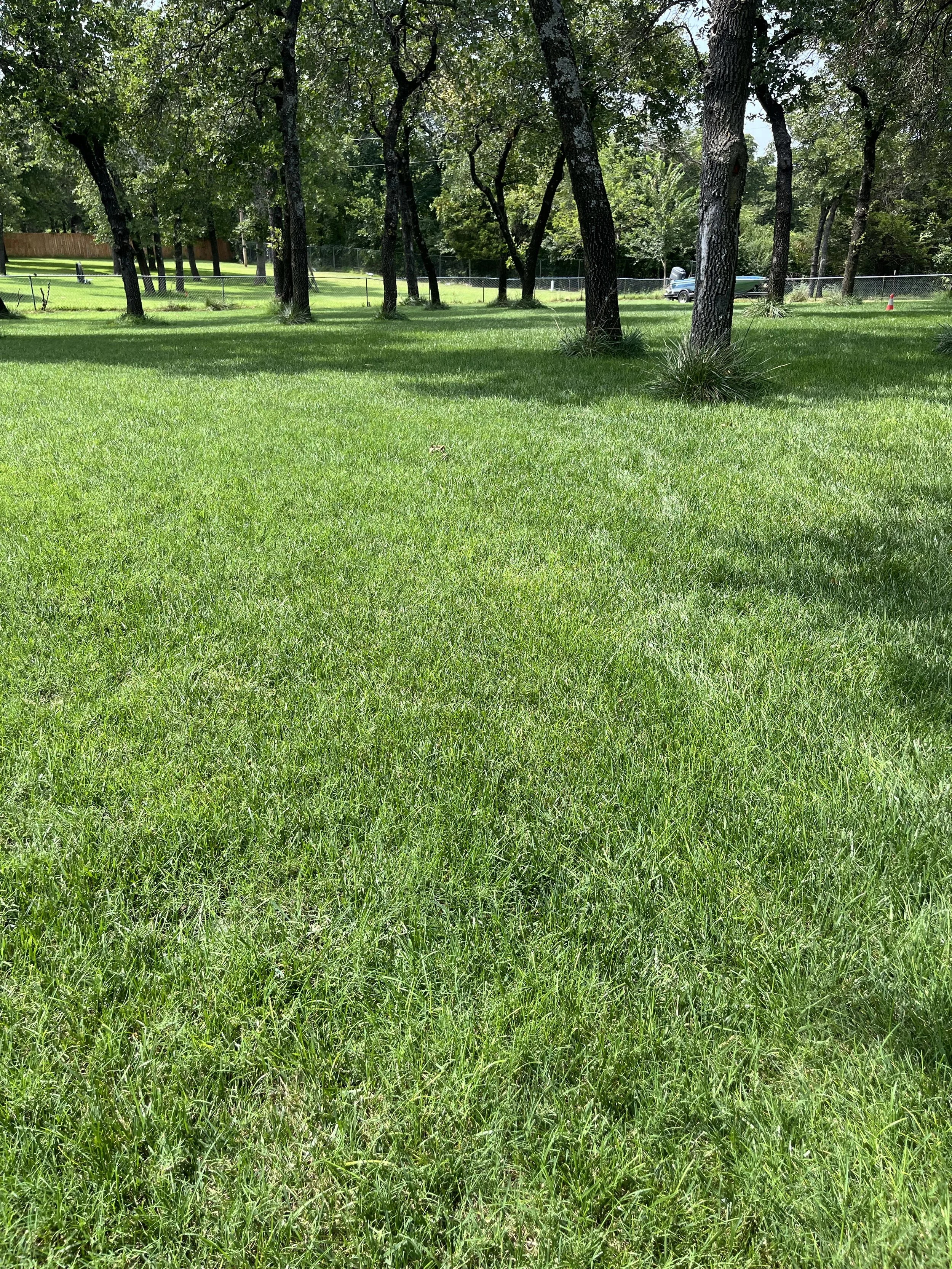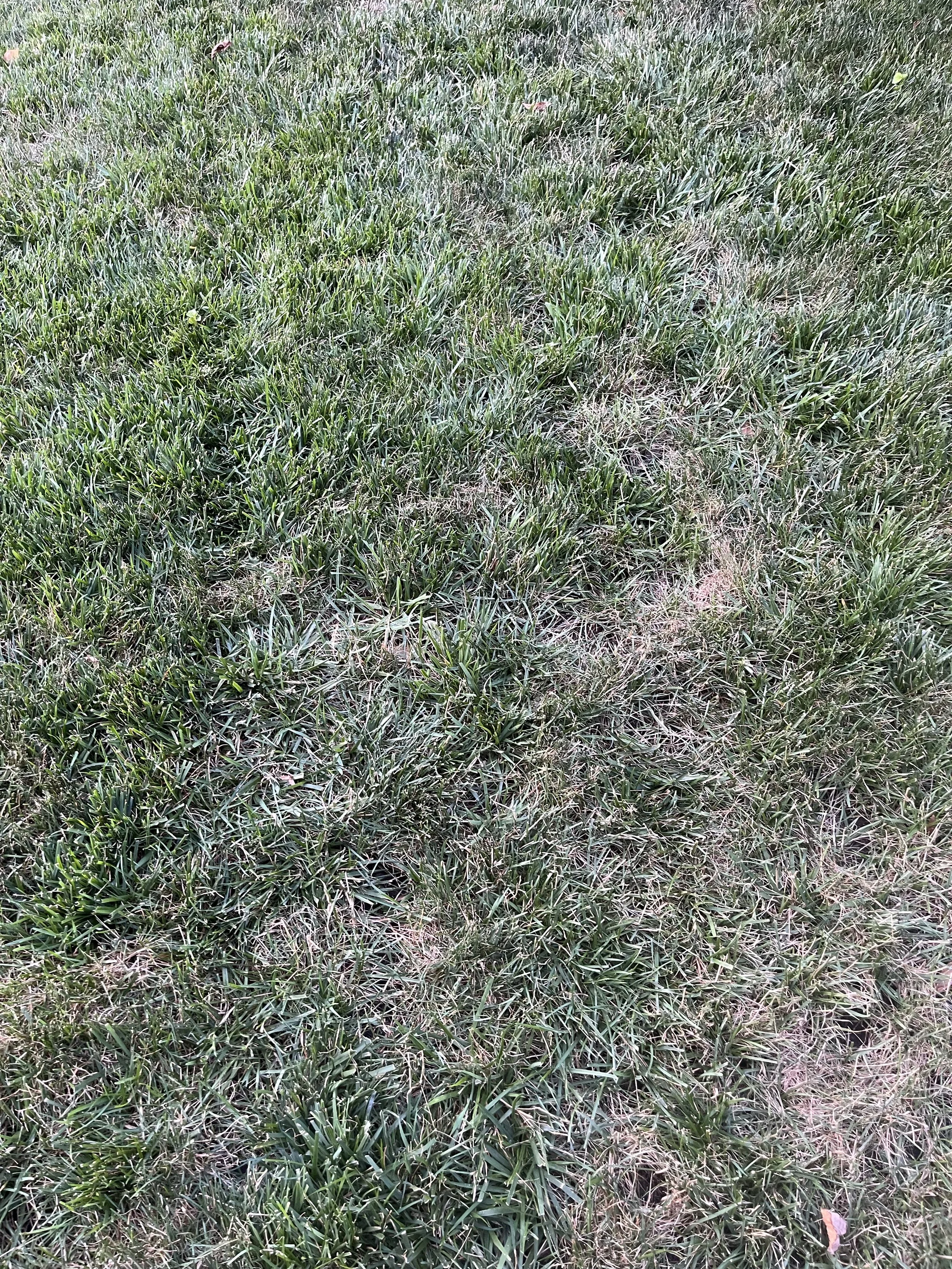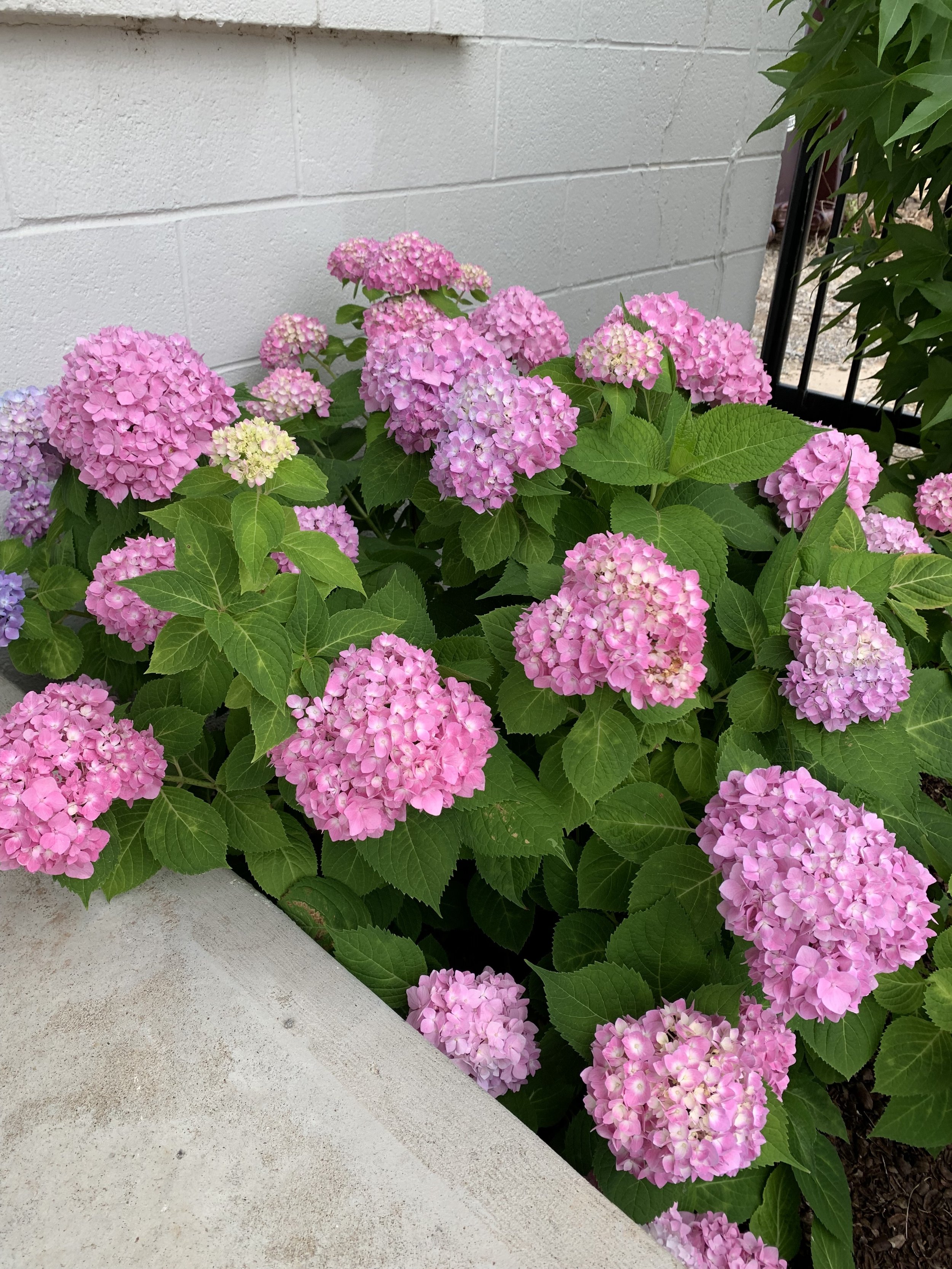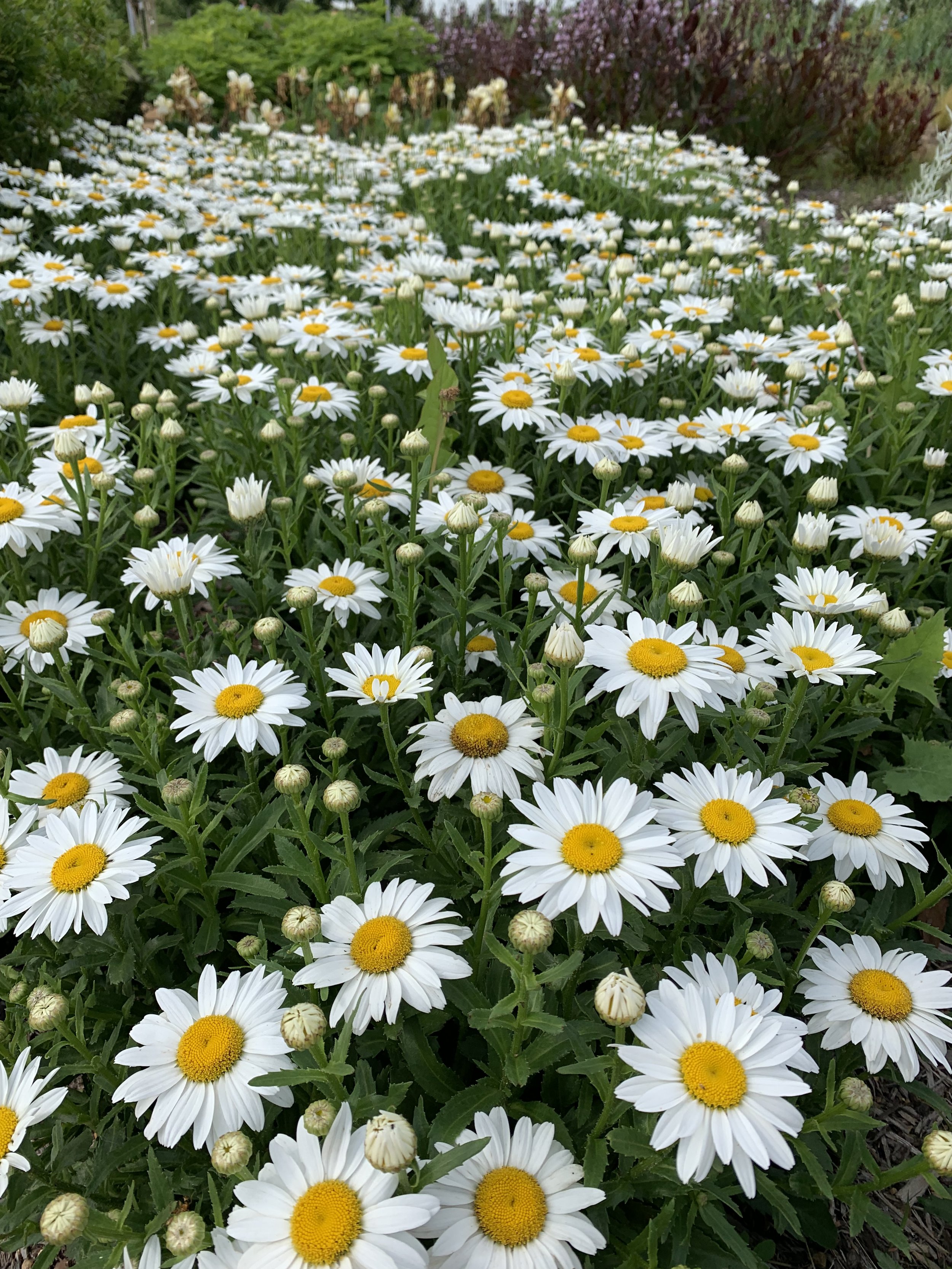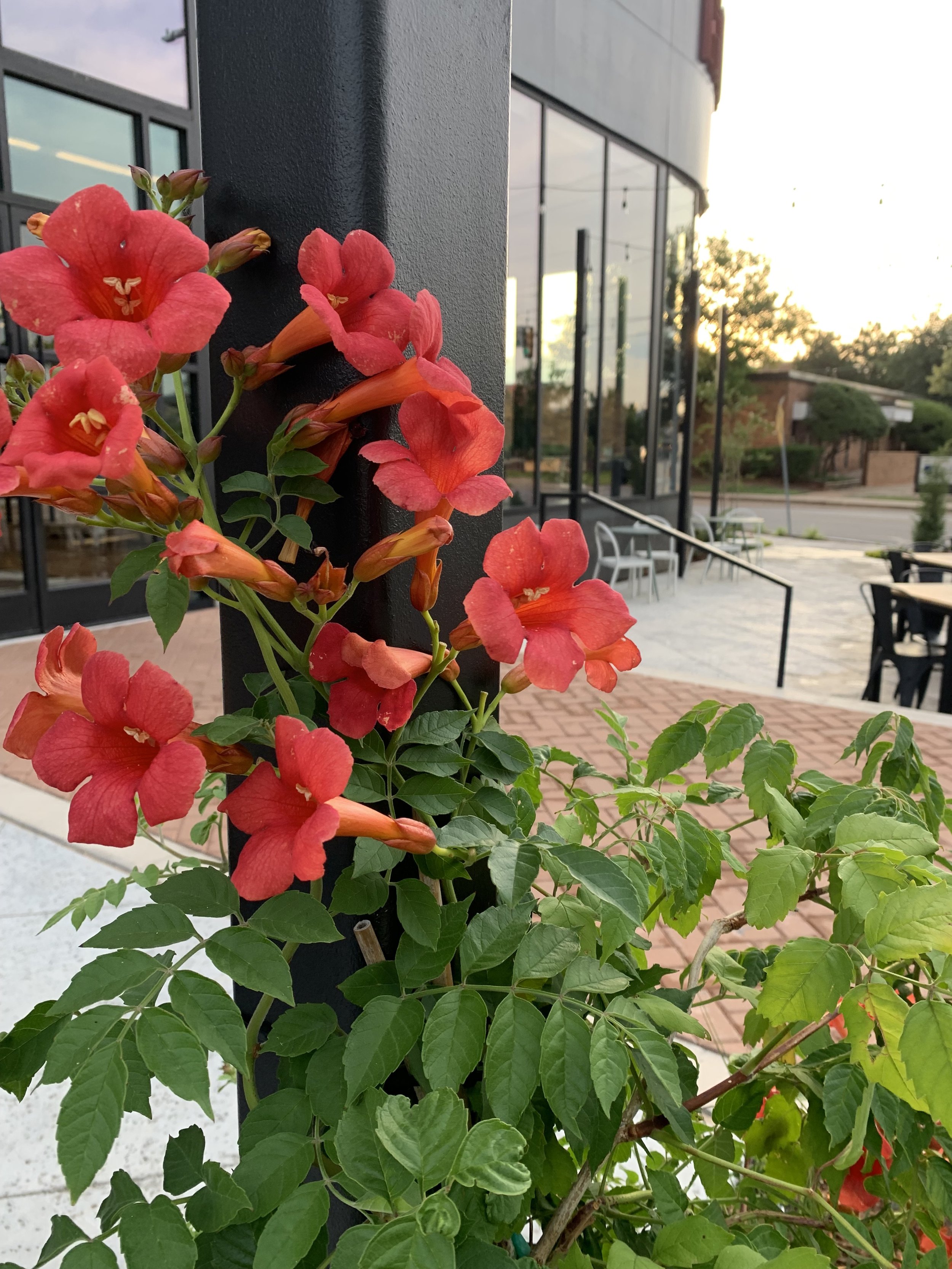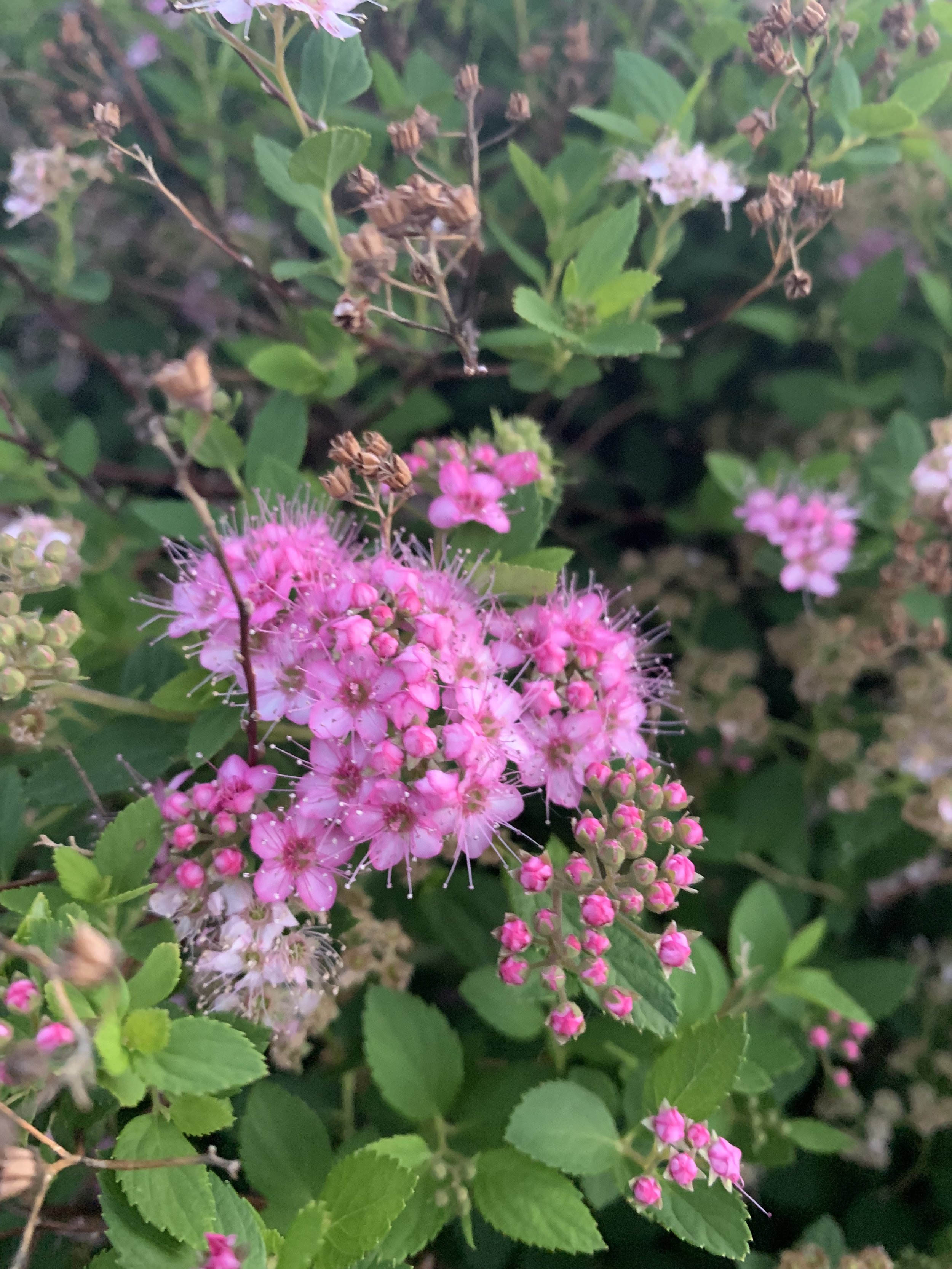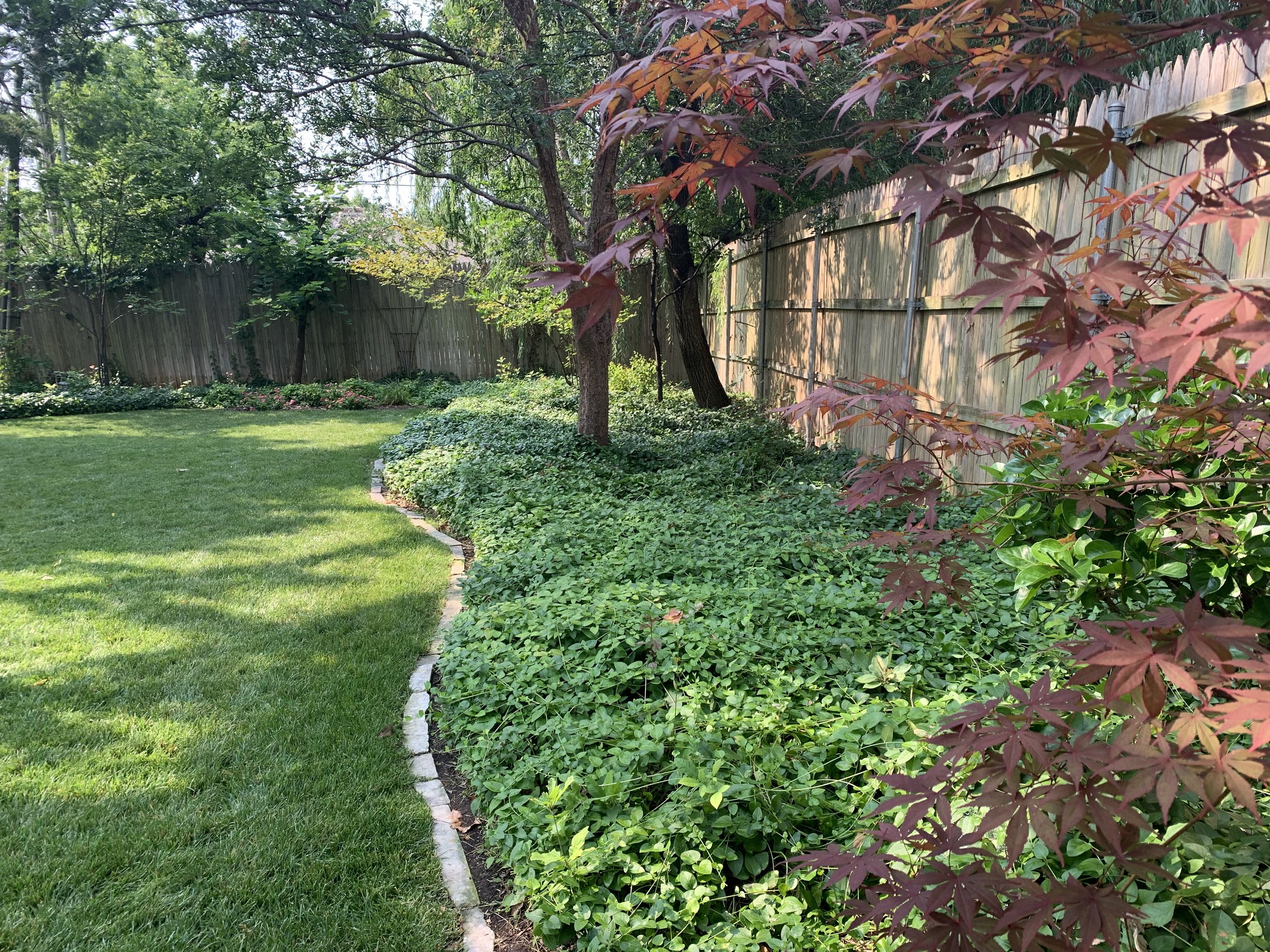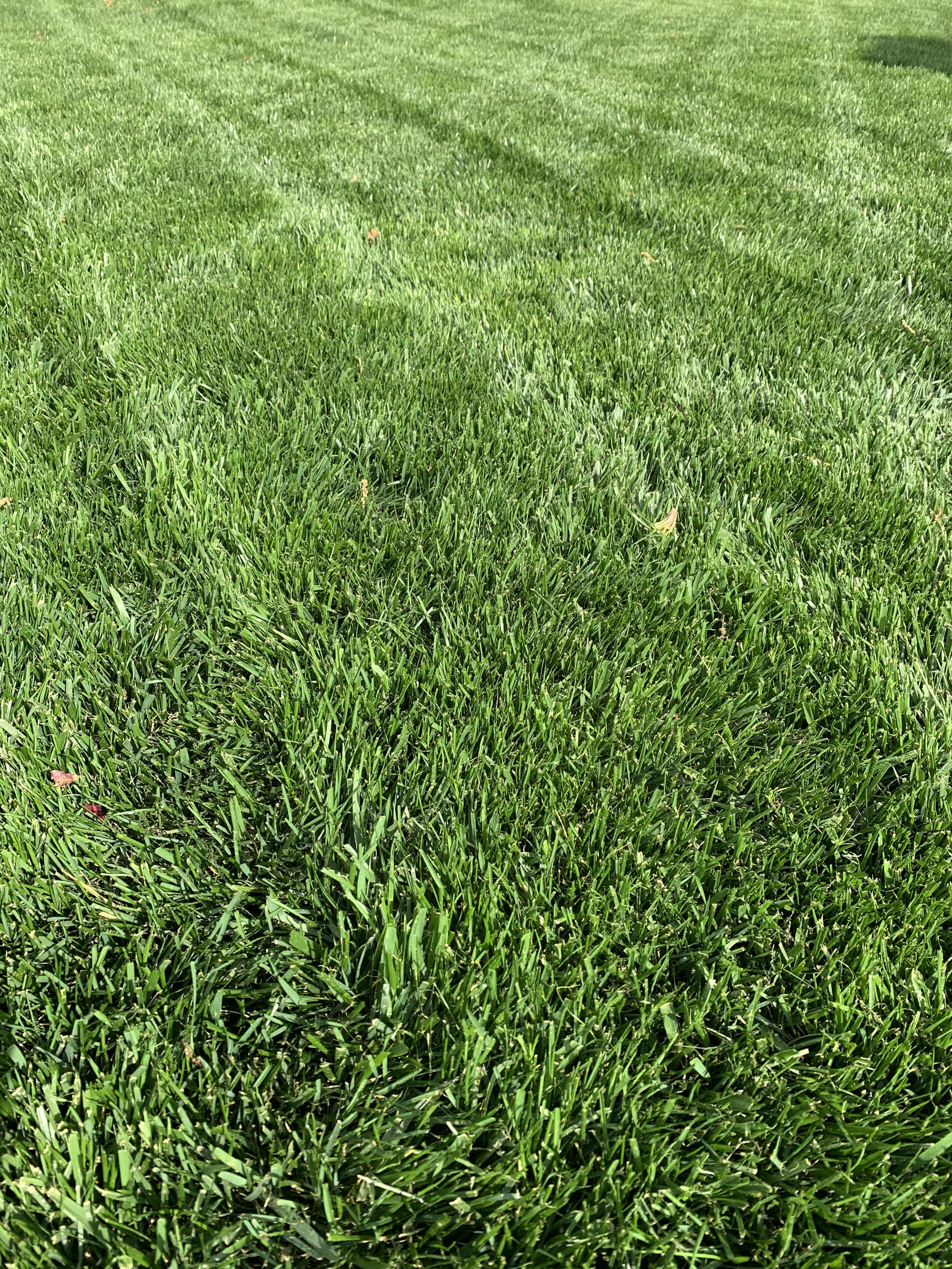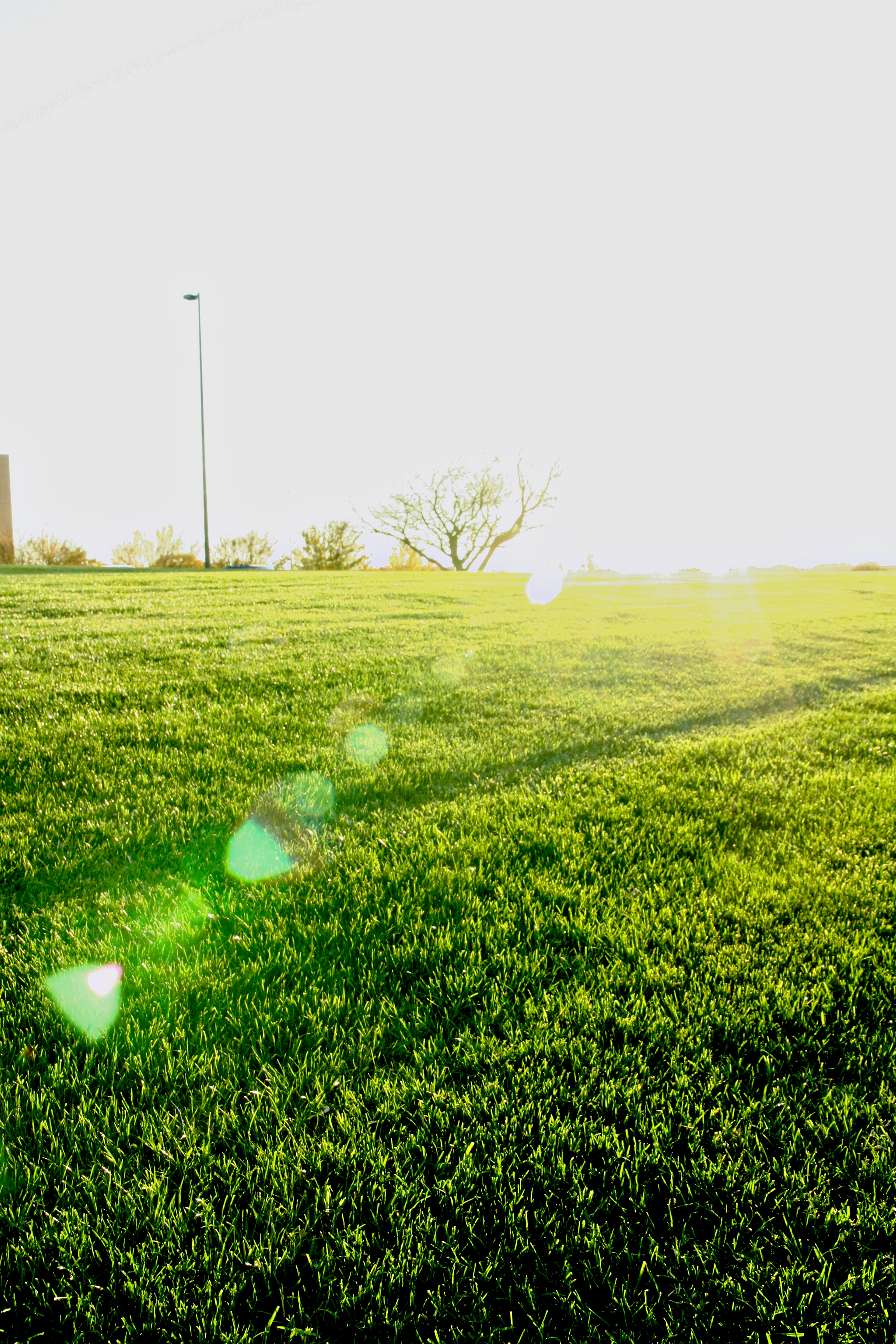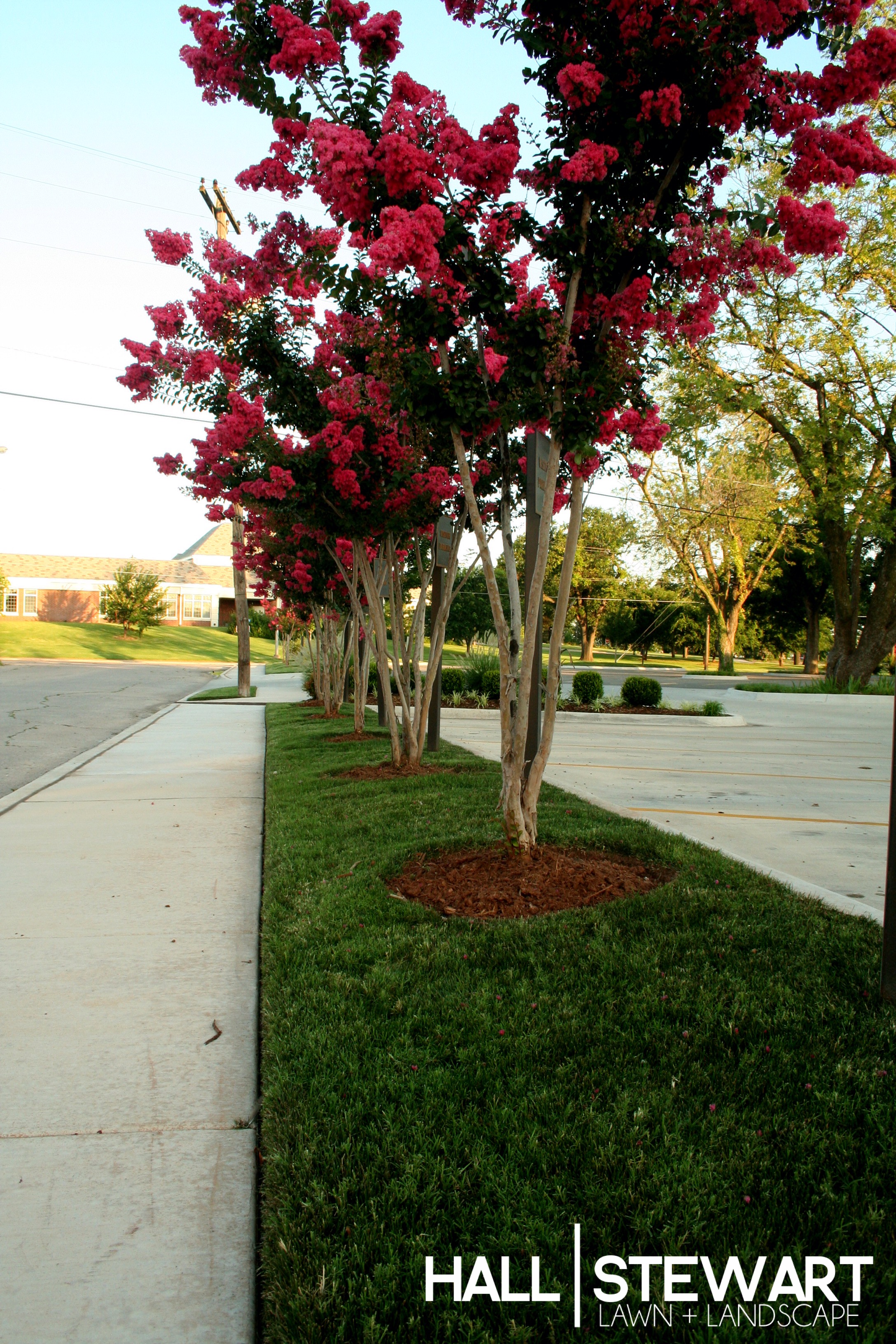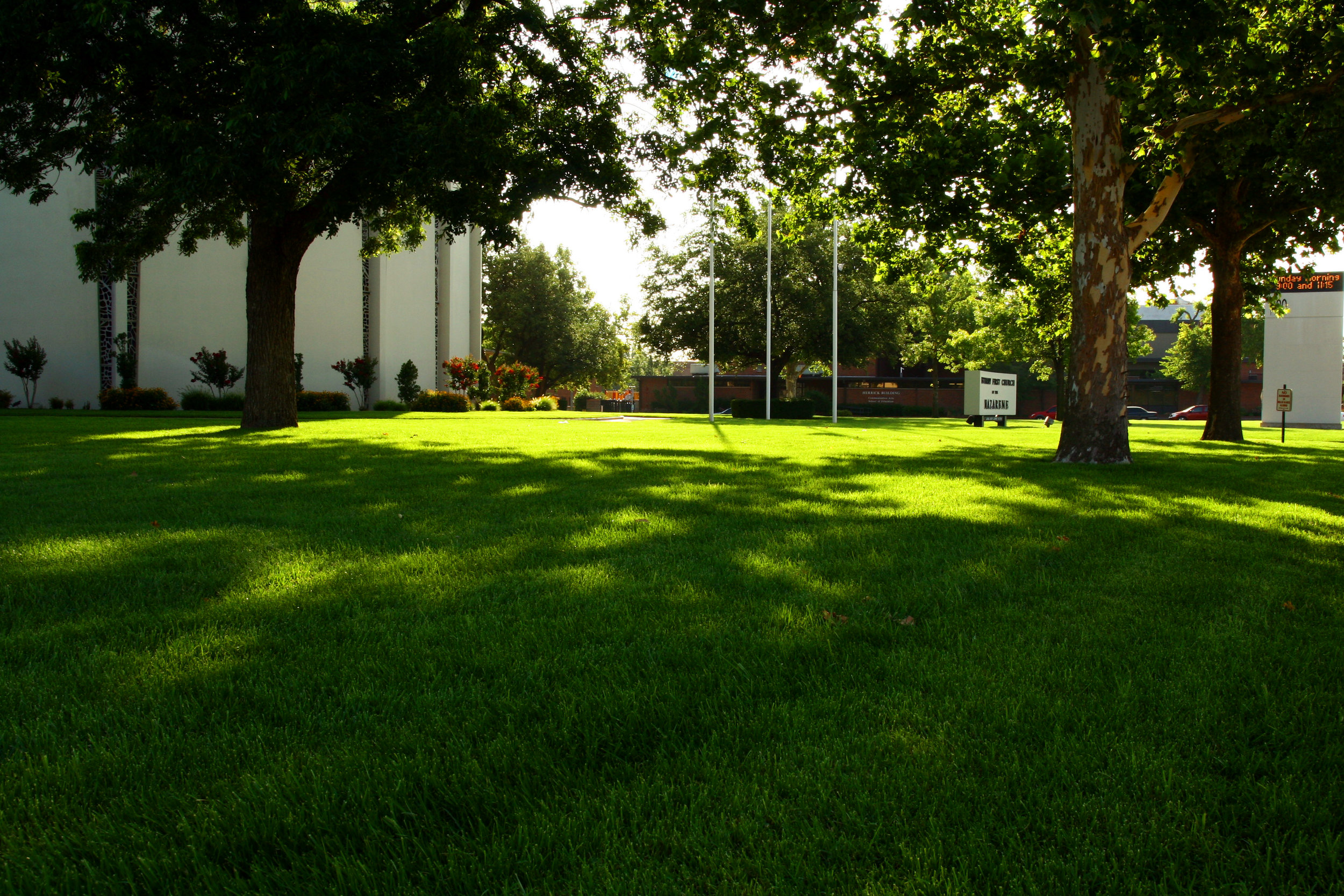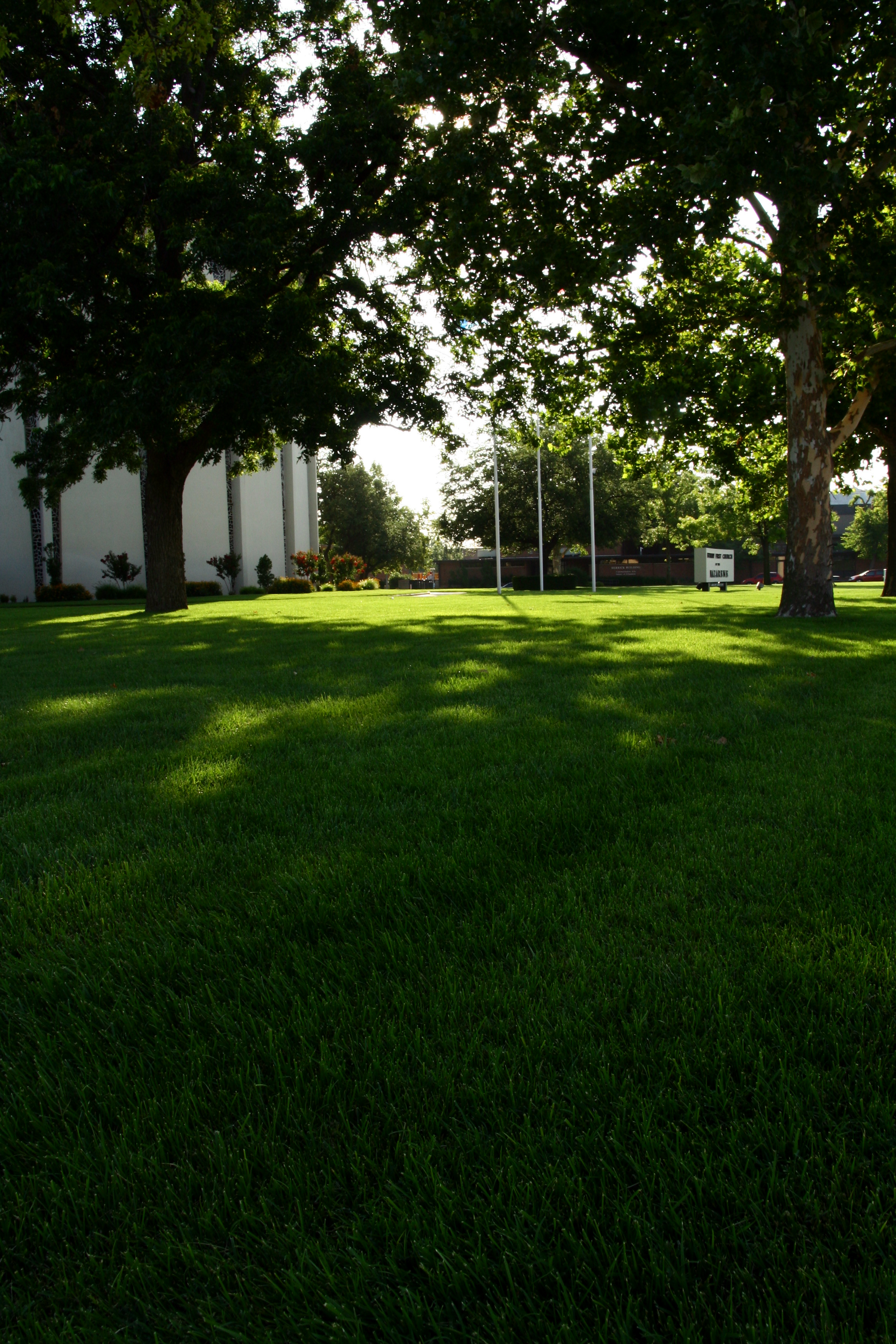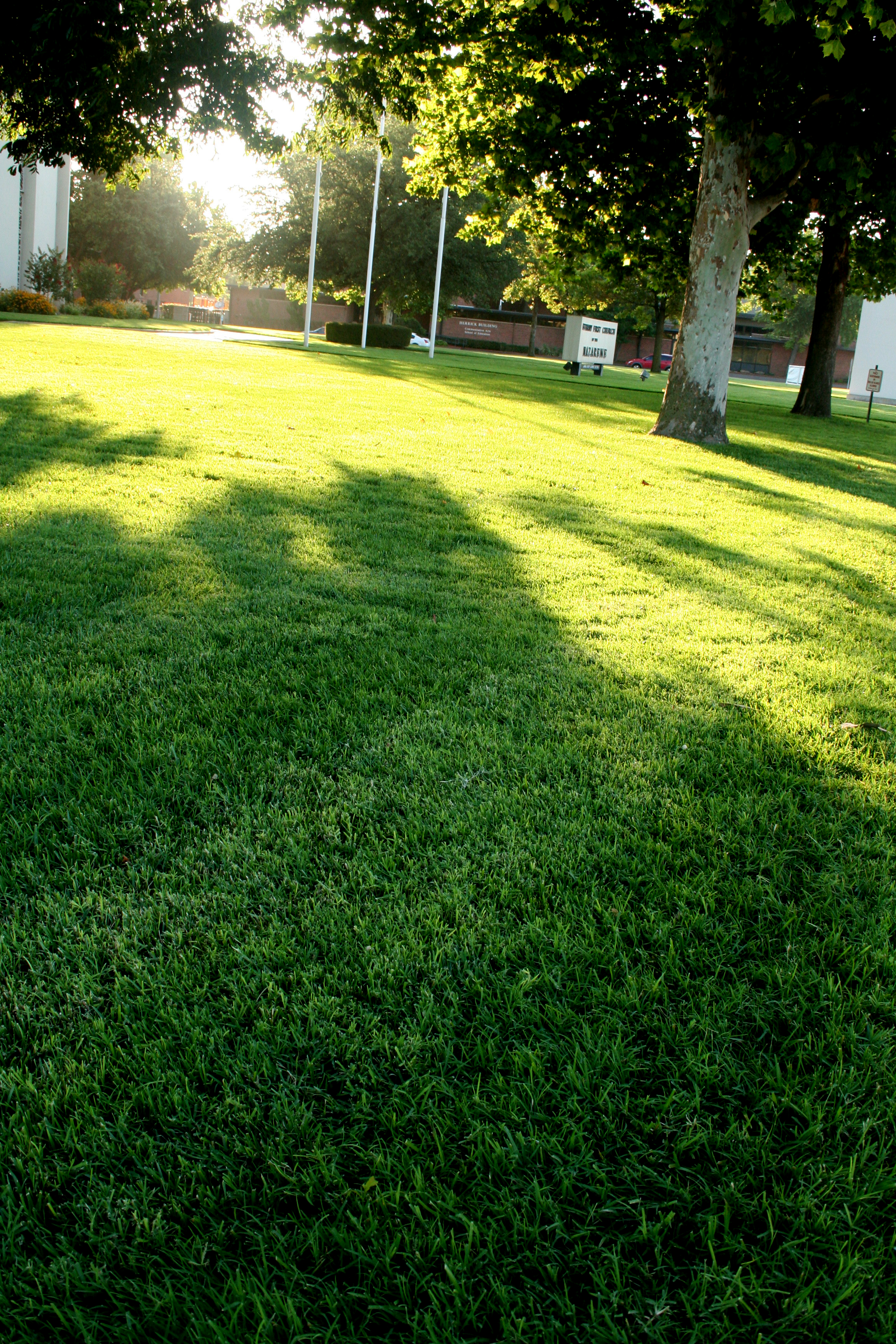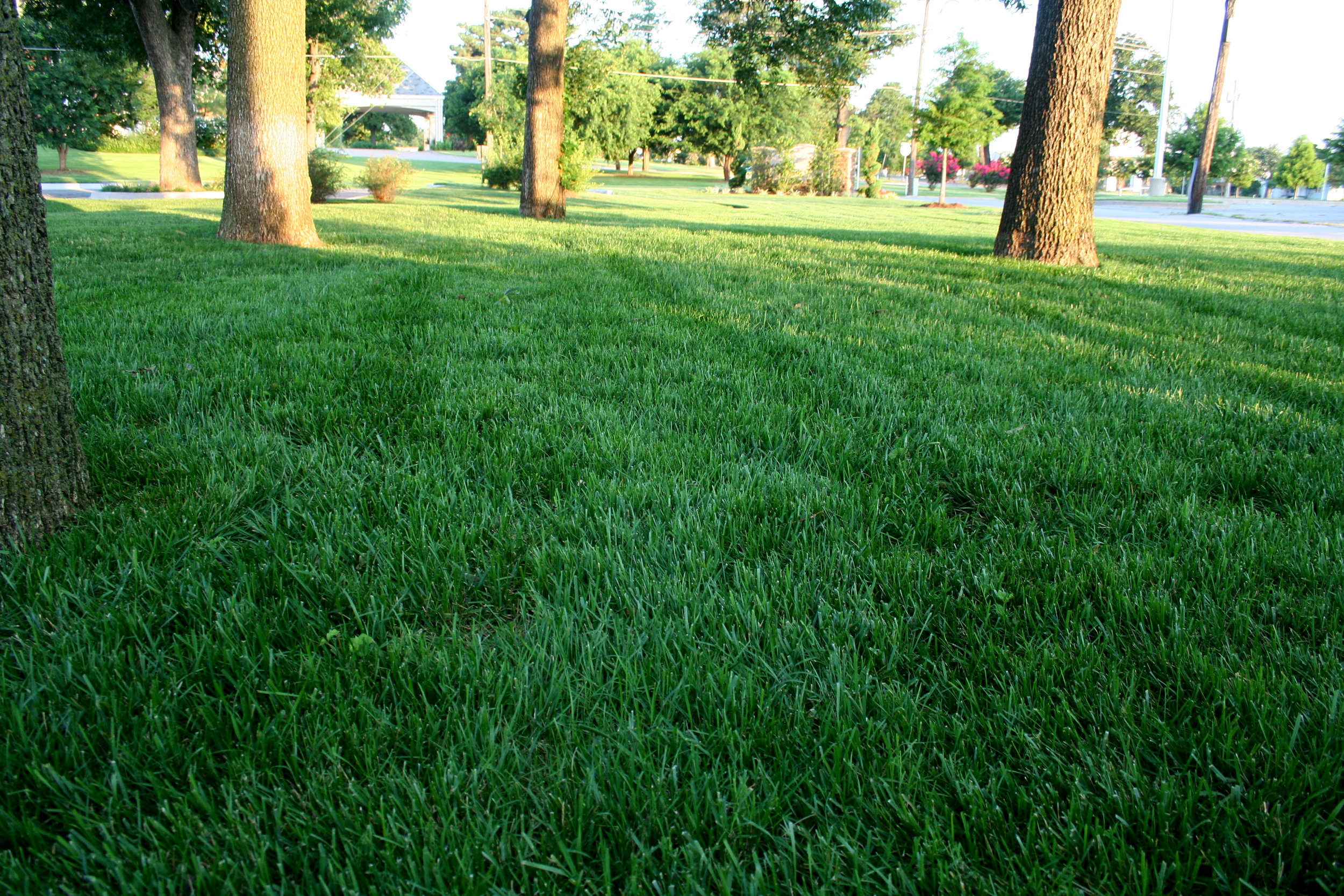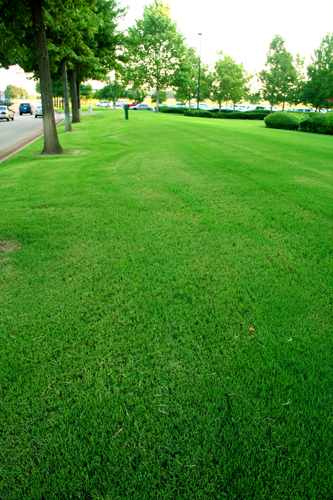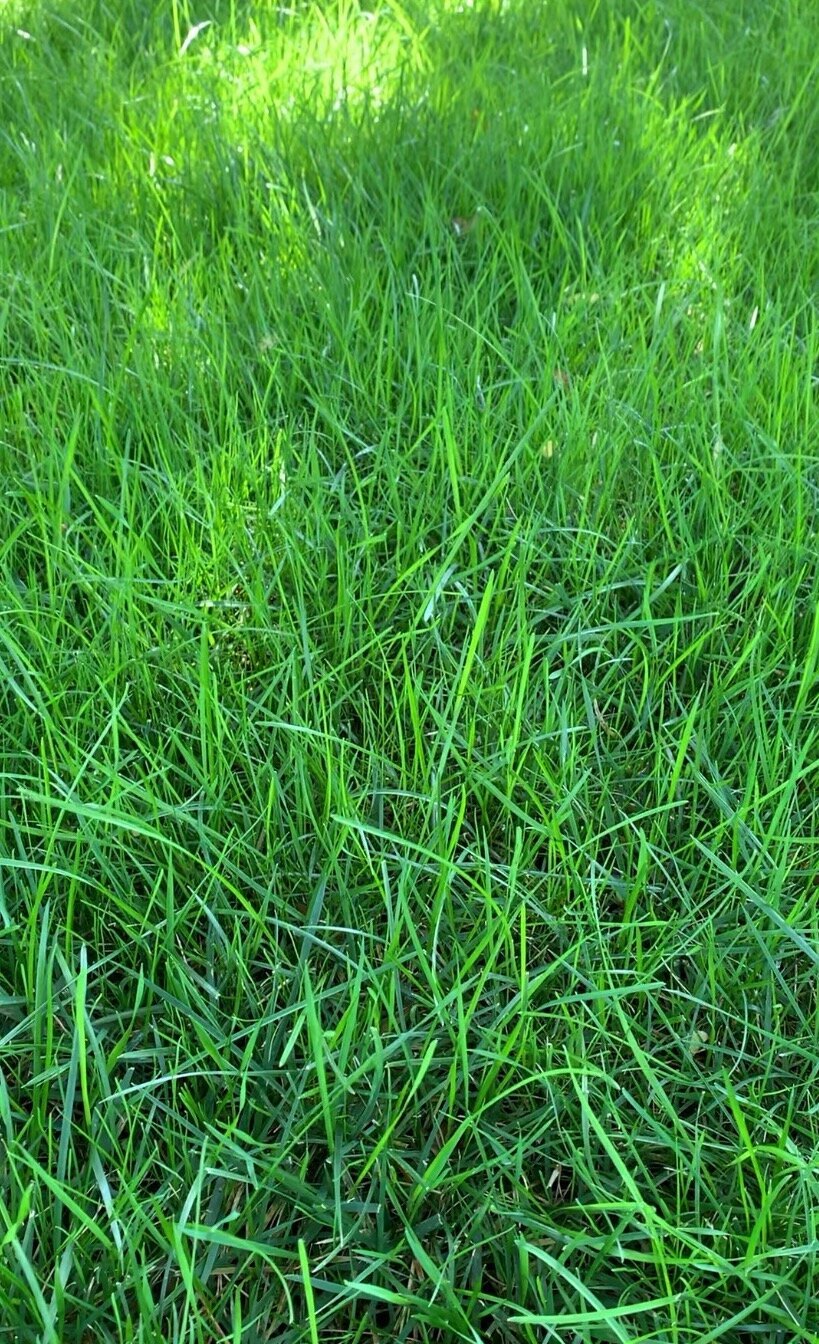
Fescue’s Summer Off Season
Question: What is one of the best things about living in Oklahoma?
Did anyone say: Living in the transition zone?
I’m guessing that was no one’s answer.
What is the transition zone? It is the area across the middle of the US between where warm season turf grows in the south and cool season grasses grow in the north.
The Transition Zone is the area of the country you can choose to grow either warm season or cool season grasses.
Bermuda is the common warm season turfgrass in our region. The advantage bermuda has is it loves the summer heat and as long as it receives moisture, it will be at its best in July and August.
Fescue is the cool season option. Fescue tolerates more shade and stays green nearly year-round. You can’t beat the deep rich color in the spring and fall. Fescue stays green well into December, often keeps some color through the winter, and as soon as the winter starts to break in early March, fescue bursts back to life.
Both have their off seasons.
Bermuda’s off season starts in November and continues until April. During this time, it goes fully dormant and turns straw-brown for months.
When is fescue’s off season?
Yes, fescue loses its green color in the winter and stops growing. So, yes, fescue has an off season in the winter, but much shorter than bermuda. Fescue goes through another slump in July through August when temperatures above 95 degrees are common. During fescue’s summer off season, growth slows and the color isn’t as intense. But, when a fescue lawn is healthy and growing under the best conditions, the summer off season is barely noticeable.
In April, customers with bermuda lawns often ask why their lawn isn’t as green as the fescue lawns on their block.
And, right now with 10 consecutive 90+ degree days, customers with fescue lawns are asking questions about why their fescue isn’t looking as good as it did in June.
Fescue lawn with dappled sunshine.
July through August is fescue’s second off season while bermuda is at peak season!
Bermuda will always have more color than fescue in July and August, but March through June and again October into December, fescue will always win the color battle.
Fescue when watered and mowed properly in full sun in the heat of the summer.
How do you keep a fescue lawn looking its best in the summer heat?
Let’s run through a list of best and worst practices for fescue during its summer off season.
Best practices for keeping fescue looking good during July and August:
Mow fescue at 3” – 3 ½”. The more leaf space the better color and the more drought tolerant the lawn will be.
Water deep. Water infrequent. Water in the early morning. Fescue lawns that are receiving 1 ½” of moisture per week, on an every other day schedule, only in the morning, look the best in the heat of summer.
Fescue lawns that receive at least some dappled sunlight and are in areas of good air circulation look the best during the summer heat.
Fescue lawns that are aerated in the fall have stronger root systems and can better withstand hot, dry days.
A properly watered and mowed fescue lawn last year during the first week of August.
Worst practices for fescue during the summer heat:
Don’t over water. Short, frequent watering does far more harm than good. It is a myth that fescue needs watered daily during the heat of July and August. When temperatures are hot and fescue stays wet for more than 6 hours at a time, brown patch will damage the turf. When brown patch starts spreading in a fescue lawn, it looks like the lawn needs more water. The natural response is to water more which makes the problem worse. It is common when making site visits where customers are concerned about their fescue to discover brown patch is the problem. Often the homeowner has increased watering to two times per day, morning and evening, every day trying to keep the fescue alive, all the while making it worse.
Brown patch in fescue.
Fescue with a mild case of brown patch.
Brown Patch is a result of fescue staying too wet when temperatures are warm. This year has been a perfect season for brown patch to flourish. Now that we have received two weeks of 95+ degree weather, areas weakened by brown patch in June are starting to show stress.
Heavy shade and low air circulation. Fescue performs best if it receives some sunlight every day. Fescue will tolerate more sun than most realize and does well in full sun when it is watered and mowed properly. Air circulation plays the important role of drying the leaf blades between watering cycles. Small backyards, privacy fences, and heavy shade are the hardest on fescue in July and August. This week Hall | Stewart Lawn Care Specialists have visited several fescue lawns with good air flow and dappled sun resulting in healthy fescue with good summer color while in the same lawn there is thinning/fading fescue in areas with low air circulation and deep shade.
Fescue cut too short. Remember leaf blades store moisture the plant needs to withstand the summer heat. Fescue survives through July and August best when it is cut at 3” to 3 1/2”. Every fescue lawn I have seen this week that is being maintained below 3” is struggling. If your fescue is less than 3” tall, don’t mow again until it reaches 4”, then remove only ½” to 1”.
Tight clay soil that has never been aerated resulting in shallow rooted fescue that will struggle in the heat.
Drought stressed fescue.
If your fescue is losing a lot of color check the soil. If it is dry, increase water by deep soaking in the morning every other day. If the soil is moist, then the problem is brown patch.
Fescue seeded over Bermuda in full sun in the heat of the year.
Fescue in full to dappled sun in July.
During fescue’s offseason, take a stroll around your lawn and start planning for the fall. The cooler days of September will be here soon.
Do you need to make some changes to how you are mowing and watering your fescue?
Are you trying to grow fescue in full shade, in a location where there is little wind movement?
If so, can you improve the conditions, or should you consider transitioning to a shade tolerant ground cover?
Or, are you OK with knowing the area needs to be overseeded with fescue every fall, will look wonderful for 9-10 months, fade for a couple of months, and then repeat the cycle again after fall overseeding?
If your fescue didn’t perform well due to the excessive moisture and high humidity of the early summer, or if it has struggled with brown patch in the heat, start making plans to overseed this fall.
Do you have areas of the lawn that are becoming too shady for bermuda? Bermuda starts to thin anywhere it does not get at least 6 hours of direct sunlight every day. Is this the fall to start establishing fescue in those areas?
Whether you have a full fescue lawn, or just some fescue in shady areas, don’t fret, fescue’s best season is just a few weeks away!
Lorne Hall
Hall | Stewart Lawn + Landscape
(405)367-3873
June Lawn & Landscape Tips
Hello Summer!
June… a magnificent month for your lawn and landscape!
June is the month when both cool season and warm season turf look great.
June is the month when an abundance of perennials add color to the landscape.
June is the month when shrubs are covered with soft, tender new foliage and so many blooming shrubs are adding splashes of color.
June is the month summer blooming trees start adding color to our world.
June is the month to discover a new favorite tree, shrub, perennial or summer annual color. What will be your favorite this June?
Awe…June is the month when all your lawn and landscape work this spring rewards you with enjoyable evenings on the patio.
Wait…don’t get too comfortable, it is summer, and your lawn and landscape still need attention:
June is the month for day lilies to add splashes of color to the landscape.
Mowing
Good mowing practices will have the biggest impact on the quality of your lawn over the summer months. For the best summer turf, get into a routine of mowing often enough that you only remove 1/3 of the leaf blade with each mowing. For bermuda and zoyia, both warm season turfgrasses, this may require mowing every 4 to 5 days. If you mow this often, don’t bag your clippings. The top 1/3 of the grass leaf is 90% moisture and nutrients. The best summer height for warm season turf is 1.5 – 2.5”. Fescue, cool season turfgrass, will continue to grow rapidly during early June but once we consistently have temperatures in the upper 90’s it will begin to slow down. The best height for cool season turf in the summer is 3.0 – 3.5”. Both warm season and cool season turfs don’t respond well to being cut below their recommended height. Cutting the lawn too short discourages root development and having deep roots going into the summer heat is important for both warm and cool season turf.
Increase the mowing height on fescue lawns to 3” to 3.5” inches June and maintain that height through the summer.
Fertilizer
Bermuda lawns should be fertilized this month with a higher nitrogen, slow-release fertilizer. The goal in June is to create a healthy bermuda lawn that will thrive in the summer heat. Fescue lawns should only receive low nitrogen, root stimulating fertilizer during June to prepare them for the summer heat.
One of the biggest concerns we have for fescue lawns right now is too many are being cut too short. Cool season lawns will do better in the summer heat with more leaf space. If you have a fescue lawn, gradually raise your mower to at least 3” this month. I started mowing my fescue lawn a ½ notch higher in May and will increase it another ½ notch this week.
Endless Summer Hydrangea are gracing the landscape with their first blooms for the summer.
Weed Control
If you subscribe to Hall | Stewart’s Lawn Care Programs and have not skipped any applications this year, your lawn has had two pre-emergent applications. This will provide your lawn with a good barrier to prevent summer annual grassy weeds. But, if not, you may have some grassy weeds, the most common is crabgrass, showing up in your lawn. June is a good month to control grassy weeds while they are still young plants. Once they mature, stronger products will need to be used which can cause turf damage. If nutsedge is making an appearance in your lawn, it is best not to pull it. When you pull nutsedge and do not remove the nut below the surface, the plant becomes stressed and multiplies.
You can expect to see Black Eyed Susans, a perennial brighten the landscape this month.
Crabgrass is a very fast growing summer annual grassy weed. If you did not get a pre-emergent on your lawn early this year, you are almost certain to have crabgrass growing in your lawn. Treat now with a grassy weed control herbicide. If you wait until July to control, harsh products that will damaged desirable turf will have to be used.
Tree & Shrub Care
The best thing you can do for your trees and shrubs this month is give them your attention. Make it a routine to walk around the landscape looking for plants that just don’t look their best. Most insects are great at camouflage and are hard to spot before you have damaged leaves. Start watching for spider mites. If you notice pale and specked foliage, shake the leaves over a white sheet of paper. If you see tiny specks that start to move, you have spider mites and should schedule a treatment. Be on the watch for bagworms on needle evergreens. When they are young, they are hard to spot. If you notice your evergreens losing color, there is a good chance bagworms are the problem. With all insect and disease issues we subscribe to an integrated pest management approach. With our Tree & Shrub Program, we inspect for issues with each visit. Most problems are easier to control the earlier you notice them. If you notice any issues with your plants, please let us know.
If you notice pale or speckled foliage on boxwood shrubs, shake a branch over a white paper. If you see tiny specks that start to move, you need to spray for spider mites.
As temperatures warm up in June be on the lookout for aphids.
Soft scale can be a problem on Redbud trees. A small 1/16-1/8”, reddish, oval scale that is often found on small twigs and can cause small branches to die if not treated. A treatment plan in late winter with a dormant oil with follow-up treatments in late spring and early summer with a horticultural oil is required.
The lacy blooms of June are a wonderful contrast to the big leaves of the Oak Leak Hydrangea.
I’m always on the look out for new landscape plant materials. This year we have planted a few Orange Rocket Barberry. Typically Barberries have an oval or spreading growth pattern. But the Orange Rocket is known for its upright, compact growth habit.
June is the month an old fashion plant, Rose of Sharon, shows us why we should add tried and true plants to our landscapes.
Bag worms start out small and hard to see. Take time to inspect your needle evergreen shrubs this month.
Do your landscape a favor and keep an eye out for bagworms. They are much easier to control when applications are made early.
Bagworms start out very small and are hard to see. Take time to inspect your needle evergreens before they cause damage.
Annual Color — Sunpatien and Joseph’s Coat
Endless Summer Hydrangeas will make their first big burst of color this month.
Shasta Daisies, a perennial, will bloom from early June through mid-summer. They make great cut flowers.
Who can’t help but fall in love with Oakleaf Hydrangeas at this time of year. Their brilliant large flowers demand attention.
Later this month Mimosa trees will add bright pink, feathery flowers to the landscape.
Shrub Pruning
June is the last month to prune spring blooming shrubs. Spring blooming shrubs start setting flower buds by mid-summer. A few examples of spring blooming shrubs: forsythia, quince, bridal wreath spirea, and azalea. If the shrub is overgrown, use thinning cuts to reduce the size and increase air flow into the center of the plant. Make thinning cuts by removing branches back to the main trunk or another branch. If the shrub only needs a little shaping, make heading cuts near the end of branches. But, remember that all shrubs will perform at their best if they are allowed to grow without heavy pruning or shearing.
Planted in mass Stella D’oro Daylily’s add bright splashes of yellow to the landscape during June.
If your Azaleas have become overgrown or need shaping, June is your last chance to prune them before they start setting buds for next spring.
Our longest blooming plant, the Crape Myrtle, will start its summer long show this month.
Watering
“How much to water” may be one of the most misunderstood aspects of managing a lawn and landscape. Develop the practice of watering based only on need. During the summer months, anytime we get a ½” rain or more, turn your system off for a few days. Depending on afternoon temperatures, a 1” rainfall may save you a week’s worth of water. The converse is true as well. If we go a week without receiving a 1” of rainfall, you need to be watering. Another clue it is time to start watering… when you walk on the lawn, if the grass doesn’t spring back up and your footsteps remain in the lawn, it is time to start watering. Remember, deep soakings are always better than short, frequent watering. Shallow, frequent watering results in lawns with less roots and more dependent on water. Throughout the summer make it a habit to inspect your landscape and adjust. Don’t set your irrigation controller at the beginning of the season, never touching it again until the fall.
Trumpet Vine
By mid month Limelight Hydrangea and Hibiscus will be adding big blooms to our landscapes.
Mulch
Add mulch to your landscape plantings this month. A 2” layer of mulch will retain moisture, cool the soil, and reduce weed germination. We prefer premium shredded all bark cedar mulch because it doesn’t float as much and aesthetically looks great. For acid-loving plants such as hydrangeas and azaleas, pecan hulls or pine bark mulch is a great choice.
Endless Summer Hydrangea
Goldflame Spirea
Annual color planting of Joseph Coat, Sunpatien, and Marigold make a great yellow/orange color scheme.
Hardy Hibiscus
Brown Patch
Be on the lookout for brown patch in your fescue lawn. June is the most active month for this disease in fescue lawns. Anytime nighttime temperatures are 70 plus and the turf remains damp for over 6 hours at a time, brown patch will develop. Areas where there is little air movement and/or heavy shade are more prone because the turf stays wet longer. Brown patch will make the lawn appear it needs more water, but watering will just make it worse. So, before you water more, think about the site, the amount of shade, the air movement in the area, and the amount of moisture the area has received. The best thing you can do if this problem occurs is to stop watering.
One of the most self-inflicted problems with fescue lawns is watering practices that promote the development of brown patch. Always allow your fescue time to dry out between waterings. Avoid watering fescue in the evening during the summer.
If you subscribe to Hall | Stewart’s 7-Step Lawn Care Program and have fescue, you will receive a fungicide this month designed to suppress the brown patch fungus.
Brown Patch will make fescue look like it needs more water, but the problem is actually the result of the leaf blades staying wet for over 6 hours at a time when nighttime temperatures are in the 70s.
There are many varieties of Spirea’s with yellow and green foliage that put on blooms in the early summer.
Crape Myrtle
Yarrow is a perennial that produces yellow flowers in late May and early June.
Also, Cone Flower, another summer perennial will make a showing in June.
Oakleaf Hydrangeas with their lacy white blooms and large oak shaped leaves put on a show from late May through mid June.
Anthony Waterer Spirea is a medium sized shrub that is covered with pink flowers in late May and early June.
Aeration
Mechanical aeration is a “best” practice for any lawn. Aeration reduces soil compaction, promotes root development, and thickens the turf. May and June are the best months to aerate bermuda. This one practice will make a significant difference in the quality of your turf. The stronger the turf, the less weed problems you will experience.
Summer Crush Hydrangeas are a reblooming hydrangea that produces large floral quality blooms in your landscape.
Insects
Regularly scheduled treatments for fleas & ticks, mosquitos, and perimeter insect control around your house should continue during the summer. The goal is to make outdoor living for your family and pets the best possible.
Southern Magnolia trees produce large white flowers in early summer. Teddy Bear and Little Gem Dwarf Southern Magnolia are great plants for smaller landscapes.
Texas Red Yucca produce tall red flowering spikes this month. There are several varieties. Brakelights Res Yucca is a favorite.
Awe…may your June be filled with time outside, in your lawn and landscape, on your patio with family and friends, enjoying the beauty every day!
If you have any questions, please send us an email or call.
Oh, and when you discover something new and exciting in the landscape, don’t keep it a secret, send us a picture!
Lorne Hall
Hall | Stewart Lawn + Landscape
(405)367-3873
The First Ritual of Spring
What is your first ritual of spring?
Is it the first shrub or tree you see in bloom?
For many lawn enthusiasts the first ritual of spring is not seeing all of creation bursting with new life, but rather it is the first time they fire up their lawn mower.
Even though we are coming off a week with over 100 consecutive hours below freezing, this is Oklahoma, and this week will have us all celebrating spring!
The first few spring-like days every year find us fielding an onslaught of questions about the first lawn mowing of the season.
Let’s cover some of the most common first lawn mowing questions:
When is the right time for spring lawn maintenance?
The best time is between the last week of February and mid-March. The goal is to do it after the last chance for extended cold weather and before spring green up.
How low do I need to cut the lawn the first time?
This will be the most often asked question over the next few weeks.
The old rule was to cut the lawn as short as the mower would go. Homeowners would brag about getting the lawn shorter than their neighbor. The more dirt exposed, the better.
But why? What is the purpose of scalping your lawn to the dirt? Is that the best thing for your lawn?
The practice of scalping your lawn in the spring on the lowest setting isn’t needed and isn’t beneficial for your lawn.
But, there is something you should do every spring – the initial spring lawn maintenance.
It is common for Fescue to end up over 3” tall. 1.5-2” is a good starting height in the spring.
Spring lawn maintenance is the process of cutting the lawn to the height you plan to start mowing this spring. The purpose is to remove the cold damaged leaf blades allowing the crown, stolons, and rhizomes to grow. It is not good to cut the lawn so short you see dirt.
What is the difference?
Lawn scalping is setting your mower on the lowest setting, cutting the lawn as short as possible, often exposing some soil in the process. But, anytime you expose dirt in your lawn you are opening the opportunity for more weeds to germinate. And, when you scalp as low as possible you run the risk of damaging the plant crown. Damage to the crown will result in a weaker root system and a stressed lawn through spring and into the early summer
Spring Lawn Maintenance is the practice of setting your mower height at or just below the height you plan to start mowing for the season. This sets the lawn up for you to gradually increase the cutting height through the spring and summer with your lawn reaching its maximum height during the heat of late summer.
If you plan to start your lawn off for the season on the second notch on your mower, then do the initial spring lawn maintenance at the same height.
Often Bermuda lawns end the season at 2-3” tall. Cutting it down to 1” is a good place to start the season.
Warm season turfs, Bermuda and Zoysia, go completely dormant during the winter, so removing the brown leaf blades is necessary. The leaf blades (grass shoots) are damaged by the winter freezes and do not green back up. In the spring, the crown, stolon, and tillers will green back up. So, only leaf blades need to be removed, not the crown or stolon.
Fescue lawn before Spring Lawn Maintenance has removed the freeze damaged grass tips.
Fescue lawn after Spring Lawn Maintenance.
Should I remove the clippings or leave them on the lawn?
Bag the clippings or rake them up after mowing. Removing the clippings is always a good practice anytime you are removing more than 1/3 of the grass blade in one mowing whether it is dormant or green.
Fescue lawn 3 weeks after Spring Lawn Maintenance
If I have a cool season lawn (fescue or rye), is spring lawn maintenance needed?
For the best spring green up, I would recommend mowing the lawn a little shorter than you left it at the end of last season. Fescue and rye leaf blades often have brown tips from the winter cold. If you remove the brown leaf tips soon, your lawn will develop better color quickly as soil temperatures warm.
If you have a fescue lawn, in the next couple of weeks cut your lawn a little shorter than you left it in the fall to remove the freeze damaged leaf blades.
Should I dethatch the lawn?
Dethatching is the process of removing excess thatch. Thatch is the layer of undecomposed grass clippings that builds up on the soil surface. When your lawn is healthy and you are mowing often enough, you should not have thatch build up. This is even true if you do not catch your clippings during the growing season. But, if you have a layer of more than 1” of thatch, dethatching is recommended. Use a verti-cutter, also known as a power rake, to remove the thatch before spring green up. Excessive thatch stops air, nutrients, and water from reaching the root zone and results in a shallow rooted turf.
Aeration, after spring green up, is also an effective way of removing thatch and has the added benefit of reducing soil compaction.
In most cases, spring lawn maintenance followed by aeration after spring green up will cure thatch problems. In over 30 years in the lawn and landscape industry, I have only seen a handful of lawns with excessive thatch problems to the point that dethatching was required.
Most fescue lawns are more brown than green now. Cutting the lawn short enough to remove the brown tips and warm spring-like days will have your fescue back to green by early March.
Best Practice for Bermuda Lawns – Anytime in the next 3 weeks cut the lawn on your mower’s next to lowest setting and remove the clippings. Plan to aerate your lawn in April – June to reduce compaction, improve soil structure, and move organic material into the root zone.
Best Practice for Fescue Lawns – In the next 3 weeks, cut your lawn a little lower than you left it in the fall to remove the freeze damaged leaf blades, then be ready to resume weekly mowing in mid-March.
If you have any questions concerning the practice of spring lawn maintenance vs scalping, or the benefits of detaching vs aeration, send us an email or give us a call.
Our goal is to help you get your lawn off to its best start this spring.
Lorne Hall
Hall | Stewart Lawn + Landscape
(405)367-3873
What is your lawn doing for you?
Hard to believe, but we have arrived at the mid-point of the lawn care season. That’s right…if you typically mow your lawn 30 times per season, you have probably made 15 trips across your lawn so far in 2024.
So, why do you do it? What motivates you to have a great lawn?
Why does Hall | Stewart Lawn + Landscape have a passion for helping you have your best lawn?
Are all our efforts only in the pursuit of laying claim to the best lawn on the block?
Why do we work so hard to have a great lawn?
Is there anything more to a healthy, green lawn than curb appeal and feeling good about ourselves?
Have you ever pondered what a healthy lawn does for you?
Too often great lawns get a bad rap.
In the race to reduce carbon output and conserve water, have we forgotten the long list of benefits of a healthy lawn?
Concerns over water supplies, herbicides, pollutants, and your carbon footprint have caused some to race toward a more minimalist approach to landscapes and lawns.
Has the American lawn, green, neatly trimmed, symbol of civic virtue, outlived its purpose?
Is it good for the environment when living plants are replaced with artificial materials or hardscape?
Yes, water will be saved. Yes, there will be less fertilizer used.
But is there more to consider?
When it comes to the benefits of turfgrass most people don’t give it much thought. The environmental benefits of a healthy lawn are seldom considered.
Can you answer the question, “What is your lawn doing for you?”
Let’s explore a few things your lawn is doing for you:
Turfgrass captures carbon.
Healthy lawns absorb carbon dioxide and replace it with oxygen. A lawn is simply a grouping of thousands of oxygen making plants.
The average, managed lawn captures more carbon than a lawnmower produces.
The average lawn captures 300 lbs. of carbon per year and has a net positive impact on our environment.
A 2,500 sq. ft lawn, half the size of the average lawn, provides enough oxygen for a family of four.
What is a managed lawn? A lawn that receives regular mowing, some fertilizer and weed control applications. Maintaining a healthy turfgrass environment provides us with a critical component of a healthy world – less carbon.
An Ohio State Study found lawns that received only an occasional mowing and no fertilizer or weed control capture far less carbon.
Maintenance habits have a big influence on whether turfgrass helps or hurts the environment. Lawns cut too short typically create a negative carbon exchange. Weedy lawns, nutrient deficient lawns, and drought stress lawns result in thin lawns that have a negative impact on the environment.
EPA reports that turf grasses in the United States offset the carbon emissions of 5.2 million cars every year.
Actively growing and healthy lawns reduce heat.
A well-maintained lawn around homes can reduce air temperatures on the average 15 to 30 degrees compared to concrete, asphalt or gravel.
The California Energy Commission found the cooling effect of an average size lawn is equal to nearly 9 tons of air conditioning.
Grass cools the air by absorbing solar radiation and through evapotranspiration.
Studies estimate that improved planting and maintenance of lawns and landscapes around homes could reduce total US air conditioning requirements by 25%.
A healthy turf captures pollutants and reduces runoff.
Less runoff increases infiltration of water into the groundwater supply. A dense root system traps and removes pollutants moving through the soil and into the water supply. The natural filtration system of healthy turfgrass improves water quality.
Lawns are the best natural water purifier.
Turfgrass is more effective at stopping erosion than any other plant. Grass naturally slows runoff and allows more water to be absorbed.
Healthy lawns improve air quality.
Healthy lawns contribute to improved air quality by acting as traps for dust and particles. Because a lawn completely covers a soil surface, particles are prevented from being blown to another area.
Compared to hard surfaces, turf grass traps 10 to 30 times more air particles and pollution.
Lawns are a major component of higher home values.
Smart Money reported consumers value a home with a well-maintained lawn and landscape on average 11.3% over the base value.
Well maintained lawns are one of the most important factors individuals and families consider when deciding where to live.
Yes, there is a place for synthetic turf in the landscape as a part of an experiential environment.
Great lawns benefit the community and human health.
Green areas enhance community pride, provide places for people to come together and promote outdoor activity.
Lawns knit neighborhoods together. Lawns connect people.
Studies show people who live and work with a view of lawns and landscapes compared to hard surfaces are found to recover from stress quicker, experience fewer headaches, and are more productive.
Two studies show that children with Attention-Deficit/Hyperactivity Disorder have shown that green spaces, such as lawn areas, experience less severe symptoms.
Studies have also found the noise absorption capacity of turfgrass is significant.
Lawns are where memories are made. No doubt, everyone can easily think of fond memories on the lawn with family and friends.
The belief that well maintained lawns are an environmental liability is short-sighted.
Don’t fall for myth that a healthy lawn isn’t good for the environment.
Water concerns are legitimate. Education on proper watering is important. Deep, infrequent watering, based on the lawn’s needs, is a key to developing a healthy lawn that is good for the environment.
The scientific study “The Role of Turfgrasses in Environmental Protection and Their Benefits to Humans” stated, “the main cause for excessive landscape water use in most situations is the human factor.”
Excessive use of fertilizers and herbicides is a problem. But, when used properly, according to the label, fertilizers and herbicides are important ingredients in creating a healthy lawn that is beneficial to the world in which we live, work and play.
James Beard, Professor Emeritus of Texas A&M, said, “The environmental benefits of turfgrass are the most sensible and economically feasible approach to counter the greenhouse effect.”
So, what has your lawn done for you lately?
Far more than you can imagine!
Lorne Hall
Hall | Stewart Lawn + Landscape
(405)367-3873
What can your lawn do for you?
In the race to reduce carbon output and conserve water, many have forgotten the long list of benefits of a healthy lawn. Concerns over water supplies, herbicides, pollutants, and your carbon footprint have caused some to race toward a more minimalist approach to landscapes and lawns.
Over the past few years the media joined the war against the landscape with articles such as “The Life and Death of the American Lawn. Grasses – green, neatly trimmed, symbols of civic virtue – shaped the national landscape. They have now outlived their purpose.”
One of the hottest trends is the replacement of natural grass with landscape gravel or artificial turf. Both have their place, but not at the expense of a healthy landscape of plants, trees, and turf.
Is it good for the environment when living plants are replaced with artificial materials? Yes, water will be saved. Yes, there will be less fertilizer used. But, is there more to consider?
Can replacing a living plants with artificial materials really be a net positive for the environment?
When it comes to the benefits of turf grass most people don’t give it much thought. The environmental benefits of a healthy lawn are seldom considered. Most would have a hard time answering the question, “What is your lawn doing for you?”
Let’s explore a few reasons why a healthy landscape is important to our environment:
Turfgrass captures carbon.
Healthy lawns absorb carbon dioxide and replace it with oxygen.
The average, managed lawn, captures more carbon than a lawnmower produces. The average lawn captures 300 lbs. of carbon per year and has a net positive impact on our environment.
A 2,500 sq. ft lawn, half the size of the average lawn, provides enough oxygen for a family of four.
What is a managed lawn? A lawn that receives regular mowing, and some fertilizer and weed control applications. Maintaining a healthy turfgrass environment provides us with a critical component of a healthy world – less carbon. An Ohio State study found lawns that received only an occasional mowing and no fertilizer or weed control captured far less carbon.
Maintenance habits have a big influence on whether turfgrass helps or hurts the environment. Lawns cut too short typically create a negative carbon exchange. Weedy lawns, nutrient deficient lawns, and drought stress lawns result in thin lawns that have a negative impact on the environment.
Actively growing and healthy landscapes can provide benefits of heat reduction.
Trees, shrubs, and lawn areas around homes can reduce air temperatures on the average 15 degrees compared to concrete, asphalt or gravel.
Studies estimate that improved planting and maintenance of lawns and landscapes could reduce total US air conditioning requires by 25%. Grass cools the air by absorbing solar radiation and through evapotranspiration.
A healthy turf slows water runoff reducing erosion and therefore reducing sediment build up and improves the quality of streams, ponds, and lakes.
Less runoff increases infiltration of water into the groundwater supply. A dense root system traps and removes pollutants moving through the soil and into the water supply. The natural filtration system of healthy turfgrass improves water quality.
Turfgrass is more effective at stopping erosion than any other plant. Grass naturally slows runoff and allows more water to be absorbed. Also, grass is a natural water purifier.
Lawns are a major component of higher home values.
Smart Money reported consumers value a home with a well maintained lawn and landscape on the average 11.3% over the base value.
Healthy lawns improve air quality by trapping dust and allergens.
Dense turf reduces the blowing of soil particles. Also, it only takes 25 sq. ft. of turfgrass to provide enough oxygen for one adult for one day.
Great lawns benefit the community and human health.
Green areas enhance community pride, provide places for people to come together and promotes outdoor activity. Research shows the result is improved physical and mental health and reduced stress.
The belief that well maintained lawns are an environmental liability are short-sighted. Water concerns are legitimate. Overwatering lawns and excessive use of fertilizers and herbicides drive much of the concern. Education on proper watering, maintenance, fertilizer, and herbicide use is important.
A scientific study “The Role of Turfgrasses in Environmental Protection and Their Benefits to Humans” concluded that there is no valid scientific basis for water restrictions of turfgrass. The report stated, “the main cause for excessive landscape water use in most situations is the human factor.”
James Beard, Professor Emeritus of Texas A&M, said, “The environmental benefits of turfgrass are the most sensible and economically feasible approach to counter the greenhouse effect.”
So, what has your lawn done for you lately? “More than you can imagine!”
Lorne Hall
Hall | Stewart Lawn & Landscape




